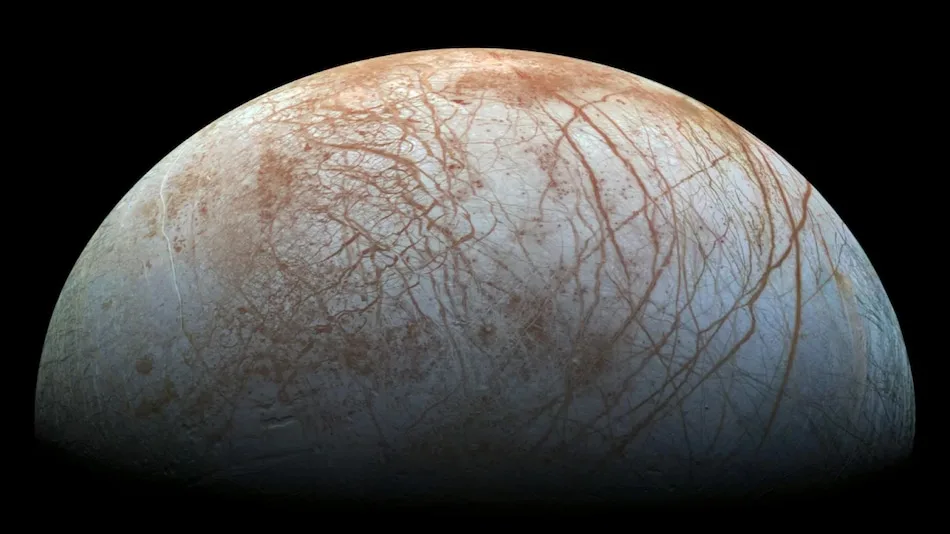Table of Contents
NASA’s Europa Clipper Launches to Explore Life Possibilities on Icy Moon Europa
NASA's Europa Clipper mission investigates Jupiter's moon for signs of life.

Photo Credit: NASA/JPL-Caltech/SETI Institute
A realistic color view shows Jupiter’s moon Europa as seen by NASA’s Galileo.
Highlights
- NASA's Europa Clipper launches to explore icy moon Europa's ocean
- Mission aims to identify life-sustaining ingredients beneath the ice
- Discoveries could reshape our understanding of habitable worlds
NASA Europa Clipper mission, aiming to explore the icy moon Europa, one of Jupiter’s most intriguing satellites. Scientists believe that underneath this icy surface lies a vast ocean, which could provide the necessary conditions for life as we know it. The Europa Clipper spacecraft will undertake 49 flybys of Europa, using advanced instruments to study its icy shell and the ocean beneath. The mission will focus on analysing surface materials that may have originated from the ocean below, searching for signs of organic compounds and examining gases that may escape from the moon.
Key instruments include the Mapping Imaging Spectrometer for Europa (MISE), which will identify the various materials present on Europa's surface, and the Europa Thermal Emission Imaging System (E-THEMIS), which will help locate possible hot spots that could indicate active geological processes.
Understanding the Internal Structure
In addition to surface analysis, the mission will also investigate Europa's internal structure. Using the Europa Clipper Magnetometer (ECM) and the Plasma Instrument for Magnetic Sounding (PIMS), scientists will measure the moon’s induced magnetic field and the electrical currents surrounding it. This data is crucial for understanding the depth and salinity of the ocean, as well as the thickness of the ice shell. The Radar for Europa Assessment and Sounding to Near-surface (REASON) instrument will allow researchers to peer deep into the ice, providing insights into potentially habitable environments beneath.
- Europa Clipper Launch Today: How to Watch it Online, Details, and More
Future Implications for Astrobiology
The findings from the Europa Clipper mission are expected to advance our understanding of habitable environments beyond Earth. Steve Vance, an astrobiologist at NASA's Jet Propulsion Laboratory, notes that the mission may raise new questions about extraterrestrial life, expanding our knowledge of where life could potentially exist in the universe. The data collected may play a vital role in future missions aimed at exploring the mysteries of our solar system.
- NASA Hubble Space Telescope Captures This Stunning Spiral Galaxy
- Jupiter’s Great Red Spot Is Mysteriously Shrinking and Expanding


